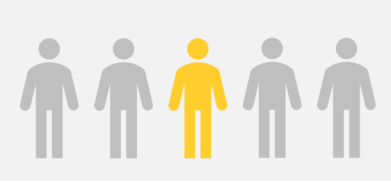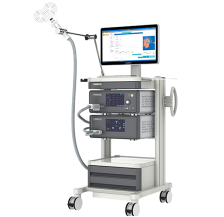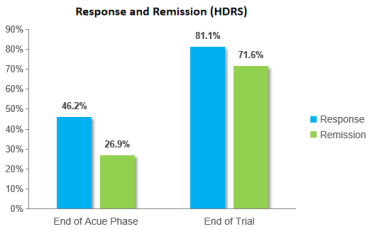
Depression are characterised by depressive mood (e.g., sad, irritable, empty) or loss of pleasure accompanied by other cognitive, behavioural, or neurovegetative symptoms that significantly affect the individual’s ability to function.[1] Current treatments include medication and psychotherapy. In addition, the current study shows that using transcranial magnetic stimulation to treat depression is an effective treatment.
During a depressive episode, the person experiences depressed mood (feeling sad, irritable, empty) or a loss of pleasure or interest in activities, for most of the day, nearly every day, for at least two weeks. Several other symptoms are also present, which may include poor concentration, feelings of excessive guilt or low self-worth, hopelessness about the future, thoughts about dying or suicide, disrupted sleep, changes in appetite or weight, and feeling especially tired or low in energy.
In some cultural contexts, some people may express their mood changes more readily in the form of bodily symptoms (e.g. pain, fatigue, weakness). Yet, these physical symptoms are not due to another medical condition.
About 4·7% (95% uncertainty interval 4·4–5·0) of the world’s population have an episode of depression in any 12-month time period. Most estimates of lifetime prevalence of depression are based on retrospective reports and need to be interpreted with caution as they are likely to underestimate true lifetime prevalence. Retrospectively reported lifetime prevalence of depression from community epidemiological surveys with adults aged 18–74 years in 28 countries averaged 10·6% (IQR 6–14) across countries. A prospective epidemiological study reported amuch higher lifetime prevalence of major depression in the range of 30–40%.[2]


TMS device for depression is a non-invasive neuromodulation technology. The time-varying pulsed magnetic field can penetrate the skull non-invasively, act on the central nervous system, generate induced currents, and cause a series of physiological and biochemical reactions, thereby affecting metabolism and neuronal excitability in the brain so that improve and treat mental and neurological diseases.There have been an increase in controlled studies evaluating the therapeutic effects of TMS technique in depressive patients. The results of these studies have suggested that using transcranial magnetic stimulation to treat depression may be an important therapeutic method.
In general, high-frequency stimulation increases the cortical excitability, whereas low-frequency stimulation has inhibitory control on the neural circuits. High-frequency rTMS (>5 Hz) produces an excitatory effect on neural tissue by inducing a form of long-term potentiation (LTP) that increases efficacy at the synapse that can last beyond the duration of a treatment session. Lowfrequency rTMS (≤1 Hz) produces an inhibitory effect on neural tissue via a long-term depression(LTD)-like mechanism.Transcranial magnetic stimulation can either excite or inhibit cortical areas of the brain, so using transcranial magnetic stimulation to treat depression is an excellent treatment.
Using transcranial magnetic stimulation to treat depression has become the authoritative treatment.The FDA permitted marketing of TMS as a treatment for major depression in 2008. In 2016, the "Expert Consensus on TMS Treatment of Depression" issued by the American Clinical TMS Society put forward five suggestions on TMS device for depression[3] and in 2018 the expert team of the electroshock and neurostimulation group of the Neuromodulation Professional Committee of the Chinese Medical Doctor Association released the "Expert Consensus on Repetitive Transcranial Magnetic Stimulation Therapy", which recommends the use of rTMS high-frequency (HF) stimulation of the left dorsolateral prefrontal cortex (L-DLPFC) or rTMS low-frequency (LF) stimulation of the right dorsolateral prefrontal cortex (R-DLPFC) for depression.[4] Recently, the International Federation of Clinical Physiology (IFCN) published guidelines for the clinical use of TMS, listing TMS device for depression as an A level recommendation.[5]
| Disease | Stimulation mode | Stimulation site | Stimulation frequency (Hz) | Stimulation intensity | Stimulation time (s) | Interval time (s) | Total number of pulses |
| HF-rTMS | L-DLPFC | 10 | 120%RMT | 4 | 26 | 3000 | |
| iTBS | L-DLPFC | 50 | 120%RMT | 2 | 8 | 600 |
The standard treatment regimen recommended in the TMS depression clinical development studies involved a specified parameter set of high frequency, left prefrontal rTMS that showed gradual and continued benefit after five daily treatments over 1–4 weeks. In addition, studies have shown that an additional 8 weeks of twice weekly continuation increased response rates. Once a determination of maximum benefit is made, the TMS treatments should be tapered and a continuation and then maintenance regimen developed for the patient.


[7]
[1] WHO. International Classification of Diseases 11th Revision. 2022.
[2] Herrman, H., Patel, V., Kieling, C., Berk, M., Buchweitz, C., Cuijpers, P., ... & Wolpert, M. (2022). Time for united action on depression: a Lancet–World Psychiatric Association Commission. The Lancet, 399(10328), 957-1022.
[3] Perera, T., George, M. S., Grammer, G., Janicak, P. G., Pascual-Leone, A., & Wirecki, T. S. (2016). The clinical TMS society consensus review and treatment recommendations for TMS therapy for major depressive disorder. Brain stimulation, 9(3), 336-346.
[4] 李达, 许毅, 安建雄. 重复经颅磁刺激治疗专家共识[J]. 转化医学杂志, 2018, 007(001):4-9.
[5] Lefaucheur JP, Aleman A, Baeken C, et al. Evidence-based guidelines on the therapeutic use of repetitive transcranial magnetic stimulation (rTMS): An update (2014-2018) [published correction appears in Clin Neurophysiol. 2020 May;131(5):1168-1169]. Clin Neurophysiol. 2020;131(2):474-528. doi:10.1016/j.clinph.2019.11.002
[6] Blumberger, D. M., Vila-Rodriguez, F., Thorpe, K. E., Feffer, K., Noda, Y., Giacobbe, P., ... & Downar, J. (2018). Effectiveness of theta burst versus high-frequency repetitive transcranial magnetic stimulation in patients with depression (THREE-D): a randomised non-inferiority trial. The Lancet, 391(10131), 1683-1692.
[7] Levkovitz, Y., Isserles, M., Padberg, F., Lisanby, S. H., Bystritsky, A., Xia, G., ... & Zangen, A. (2015). Efficacy and safety of deep transcranial magnetic stimulation for major depression: a prospective multicenter randomized controlled trial. World Psychiatry, 14(1), 64-73.